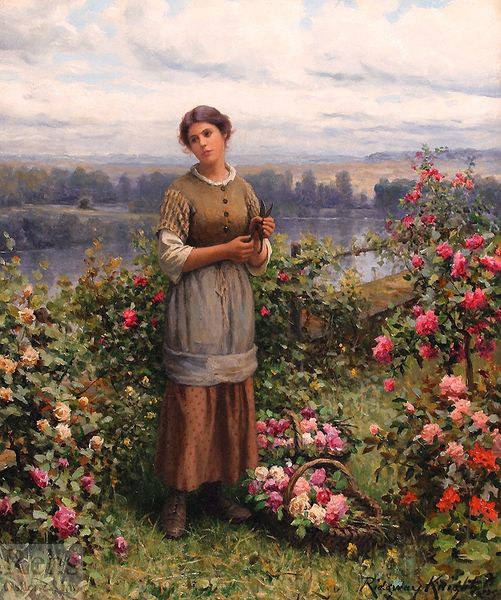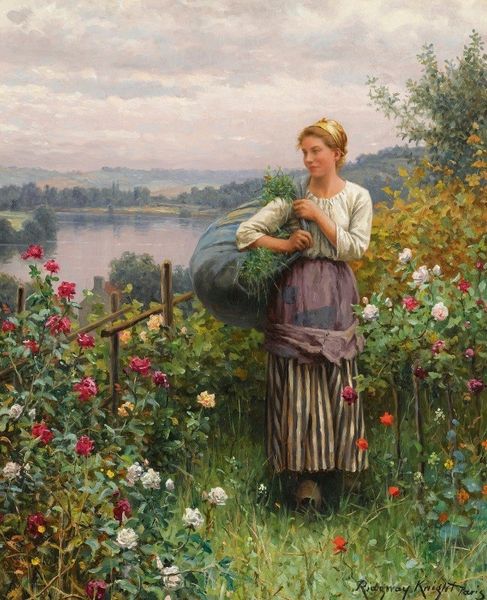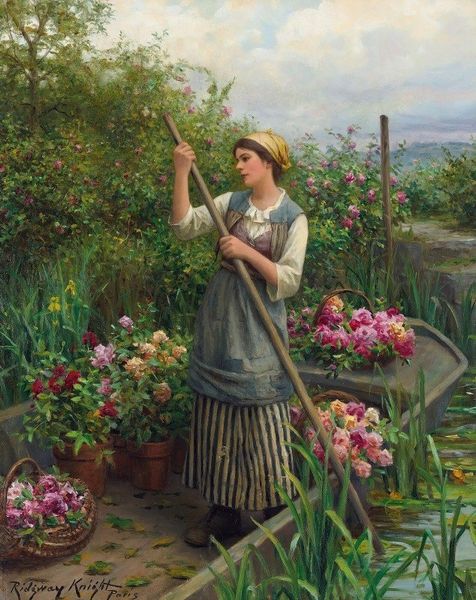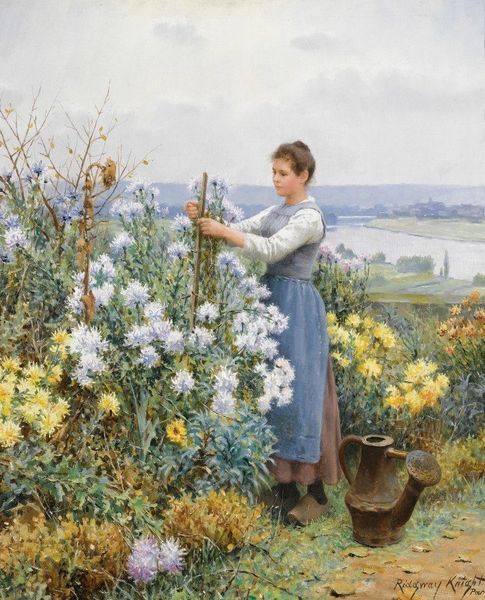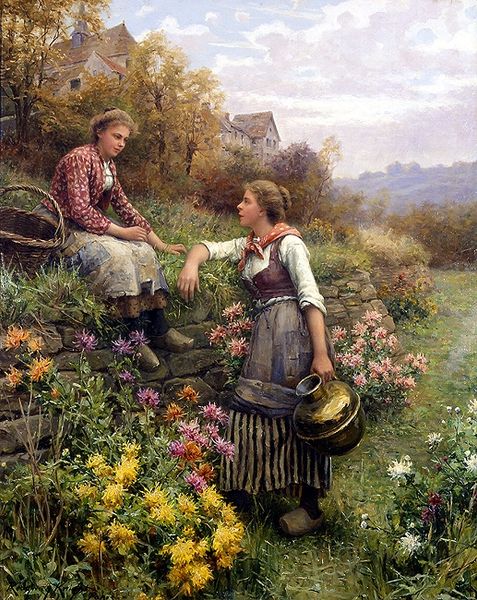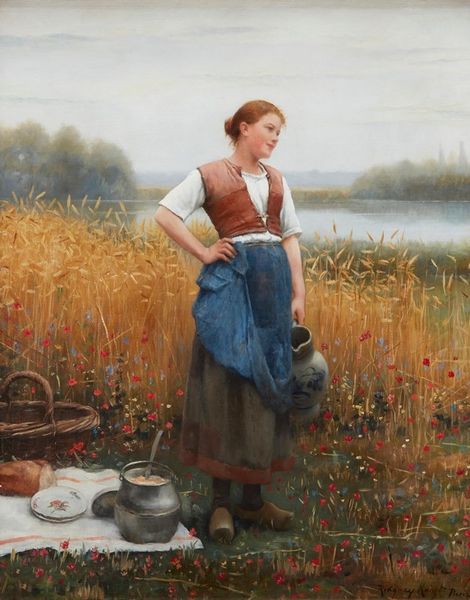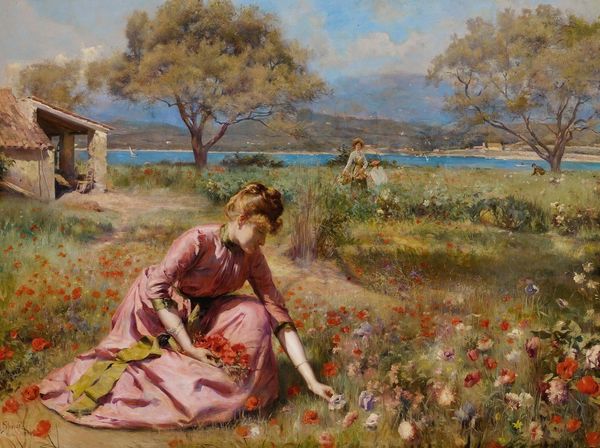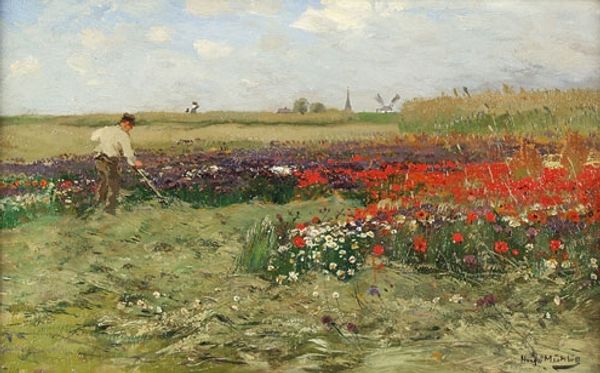
Copyright: Public domain
Curator: Oh, that's a beautiful scene. The way she's reaching into the field, so simple and graceful. Editor: Indeed. What we're looking at is Daniel Ridgway Knight's "Girl Picking Poppies" from 1898, a painting rendered with oil paint. It feels like you could almost smell the fresh air and feel the sun on your skin, doesn’t it? Curator: Absolutely. It just pulls you right in! But there's also a stillness to it, isn't there? She's surrounded by this riot of color and life, yet there's a quiet solitude about her, totally absorbed. Do you feel it too? Editor: Definitely. Knight was an American artist who gained quite a bit of recognition for his rural genre scenes, and you see him employing a plein-air style to portray French peasant life. The interesting part is the constructed imagery around labor, almost always featuring women who don’t really break a sweat! Curator: Exactly! It’s less about the hard work and more about…the aesthetic pleasure of rural life. There’s this inherent romanticism to it all. A perfect image of an idealized woman immersed in a kind of Arcadian dream, wouldn't you agree? Editor: You hit the nail right on the head. These idealized rural scenes served as nostalgic projections during a time of rapid industrialization and urbanization. People were moving to cities en masse, and images like this provided a comforting escape, perhaps even a visual reassurance that the simpler life still existed, and in some sense, they controlled the means to acquire and access it as art pieces in their homes. Curator: Right! Like a painted postcard from a world that's slipping away… though let’s face it, probably never really existed in quite that way. Still, those poppies are magnificent, bold splatters of red that contrast so sharply with the soft background, and those layers and layers give the overall impression depth, so much depth. Editor: Knight clearly knew how to please the market with romantic depictions of peasant women; while art critics questioned his aesthetic choices, the bourgeois appreciated and happily consumed images that spoke of an untainted, idealized countryside. Curator: Well, either way, it makes you appreciate a field of flowers. It sparks our imagination, so what else can one ask? Editor: Indeed, a picture of idealized labour in an era of transition can bring the old and the new into the space of artistic expression!
Comments
No comments
Be the first to comment and join the conversation on the ultimate creative platform.
